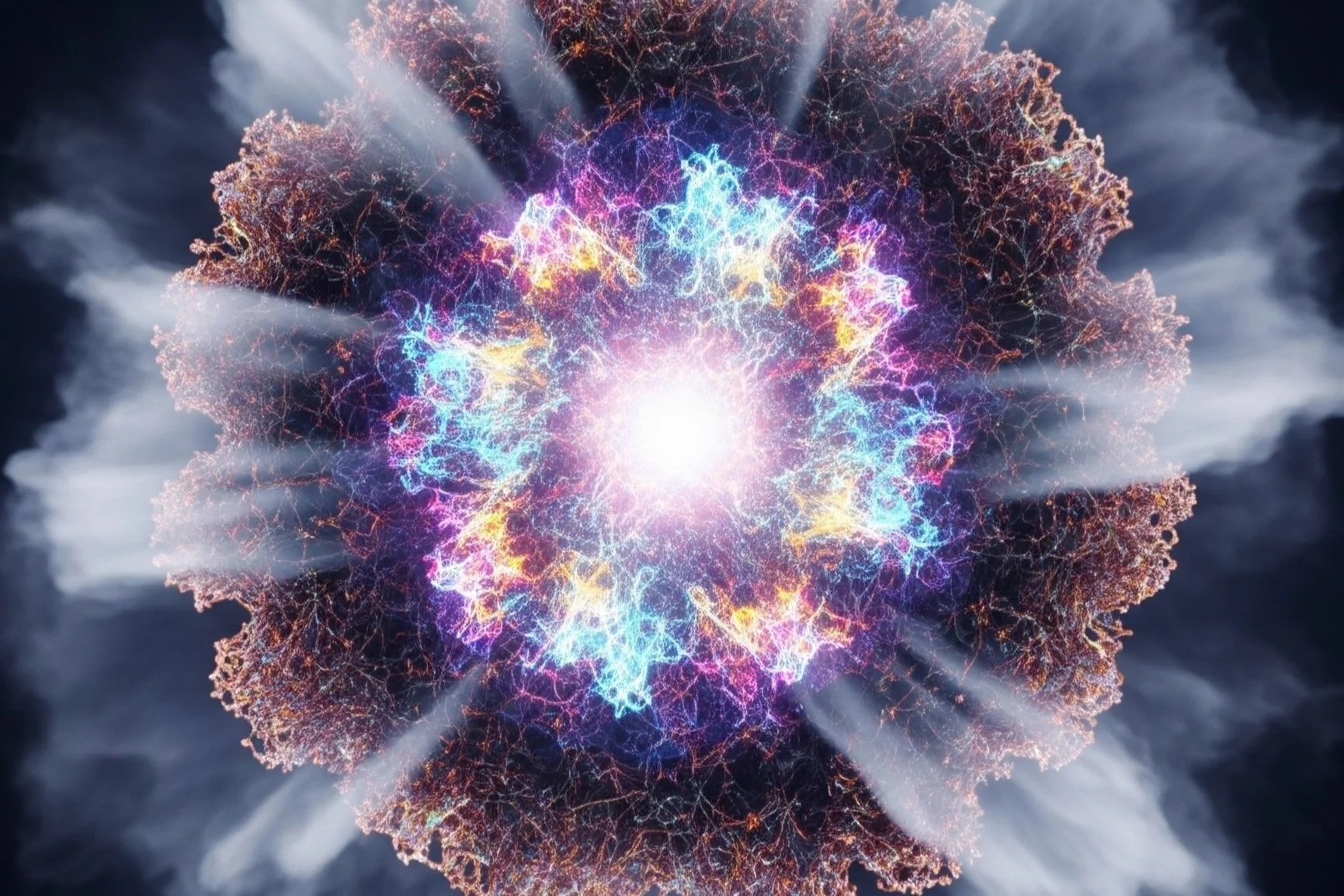ALICE in the Beginning: CERN’s Hunt for Antimatter Uncovers a Cosmic Clue
Why does anything exist?
It’s a question as old as curiosity itself—and one of the most profound in all of physics. From the stars above to the atoms in our bodies, everything we know is made of matter. But for reasons science still can’t fully explain, the universe’s creation should have canceled us out entirely.
This grand mystery goes by many names: baryon asymmetry, matter-antimatter imbalance, or simply matter asymmetry. But they all point to a single, confounding truth: at the moment of the Big Bang, matter and antimatter should have existed in equal quantities—only to annihilate each other in a flash of pure energy. Instead, something tipped the scales, allowing matter to dominate, to build galaxies, planets, and eventually life.
Now, scientists at CERN’s Large Hadron Collider (LHC) are getting closer than ever to understanding why.
ALICE and the Origins of Matter
In late 2024, the A Large Ion Collider Experiment (ALICE)—one of the LHC’s most specialized experiments—unveiled a stunning discovery: the heaviest antimatter particle ever detected, a form of exotic antimatter known as antihyperhelium-4.
Though its name might sound whimsical, ALICE is doing serious work. Designed to study heavy-ion collisions, the experiment recreates conditions that mimic the first moments after the Big Bang—specifically, a quark-gluon plasma, a seething soup of fundamental particles that existed less than a millionth of a second after time itself began.
And that’s precisely what makes this discovery so important.
Antihyperhelium-4 is no ordinary particle. Unlike regular helium, which contains two protons and two neutrons, hyperhelium contains “hyperons”—particles that include at least one strange quark, giving the nucleus exotic properties far removed from normal atoms. Its antimatter counterpart, antihyperhelium, mirrors this structure with antiprotons, antineutrons, and anti-hyperons.
These particles don’t last long. They decay almost immediately, making their detection a scientific and technological triumph. According to Physics World, antihyperhelium-4 decays into antihelium-3, an antiproton, and a charged pion—a transformation that occurs in the blink of an eye. Spotting one is like trying to catch a snowflake in a hurricane.
And yet, ALICE succeeded—adding a third rare antimatter hypernucleus to a list that includes antihypertriton and antihyperhydrogen, both discovered by the STAR collaboration at the Relativistic Heavy Ion Collider (RHIC) in New York.
A Glimpse Into the Cosmic Past
What’s the point of creating rare and fleeting antimatter particles? For scientists like Qiu Hao, a STAR collaborator involved in discovering antihyperhydrogen, the answer is clear: “To answer the question of why matter dominates the universe, we need to create new antimatter in the lab and study its properties.”
These studies aren’t just academic exercises. They could unlock the mechanisms behind the matter-antimatter asymmetry, helping physicists pin down the processes that gave rise to a matter-filled universe. Even more, hypernuclei and antihypernuclei offer insights into the dense, mysterious environments of neutron stars, where extreme gravity compresses atomic nuclei into bizarre configurations still beyond our full understanding.
By observing how hypernuclei interact with protons and neutrons, physicists can begin to simulate the conditions within neutron stars—some of the most enigmatic objects in the universe. Each discovery adds a new clue to the strange physics of these celestial giants and the matter they contain.
Building the Blueprint of Existence
Ultimately, the search for answers to the universe’s biggest mysteries comes down to its smallest components. The fundamental particles forged in the fires of the Big Bang still shape the cosmos today. Understanding them is essential not only to grasping our past but also to unlocking the fate of the universe itself.
The discovery of antihyperhelium-4 is a giant leap forward in this quest. It’s proof that with the right tools—and relentless scientific drive—we can recreate the echoes of creation, and begin to understand why the universe favors existence over emptiness.
For the scientists at ALICE, the work is just beginning. Each collision in the LHC is another shot at unraveling the origin of matter. And with every particle uncovered, the fog of the early universe lifts just a little more.
Because when it comes to the most important question in physics—Why is there something, rather than nothing?—the answer might be written in the fleeting traces of particles like antihyperhelium.
This article contains AI generated content using information from these sources:
Popular Mechanics - https://www.popularmechanics.com/science/a64554409/antihyperhelium-lhc-alice/
